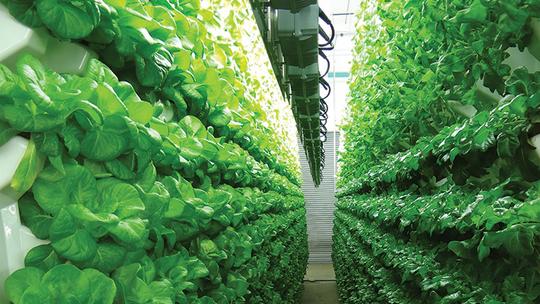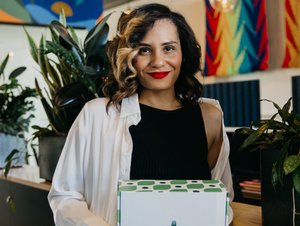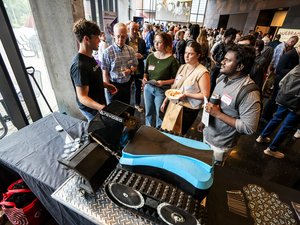
On a farm in Faribault, set indoors and covering 60,000 square feet, salad greens and herbs grow in planters stacked vertically like bookshelves. Living Greens Farm can grow vegetables at a scale similar to a conventional farm with hundreds of acres, and a recent expansion allows the company to reach commercial-scale production.
That brings more locally grown butter lettuce, romaine, basil, and a handful of “microgreens,” including baby kale and arugula to grocery stores like Walmart, Hyvee, and Cub Foods across Minnesota, Wisconsin, North and South Dakota, and Iowa, CEO Dana Anderson said.
The company’s expansion in February makes room for more processing capacity. It’s releasing new products including chopped and bagged salads that compete with conventional counterparts supplying greens to the Midwest in winter from California and Arizona.
Living Greens uses a method known as aeroponics. That means plants grow outside the soil, with roots exposed so that nutrients can be applied directly to them. They can grow greens year-round in an inhospitable winter climate like Minnesota because of the amount of control they have over the indoor growing environment, from light to temperature to humidity.
“Our patented growing technology has changed the game of aeroponics, within one year our new farm will save 24 million gallons of water and several hundred thousand miles of shipping – saving over 35,000 gallons of diesel and nearly a million pounds of CO2 emissions," Anderson said in a recent news release about the new grow room. “With our third grow room, Living Greens Farm will nearly triple its capacity, move into major market segments and position the company for even stronger growth in 2019. The expansion places Living Greens as the world’s largest vertical plane aeroponic farm in the world.”
"This technology is not developed for doing business in just Minnesota. We’d love to do it all over the world."
Projections indicate the global population could reach 9 billion people by 2050, putting greater strain on resources. Farmland is already in decline, Anderson said, and there isn’t enough to produce the amount of food the world will need. Seeing gaps and deficits in the technology developed for vertical farming, Anderson started there. Living Greens Farm has patents on its irrigation, lighting, and airflow technology.
In all, they have been issued four patents and have others pending. So while they continue developing new products, the company is working on licensing its technology so it can expand globally, bringing fresh, locally grown produce to unlikely places around the world.
“My ambitions were very similar to the industry motivations: To deal with the challenges of feeding this planet,” he said. “This technology is not developed for doing business in just Minnesota. We’d love to do it all over the world.”








